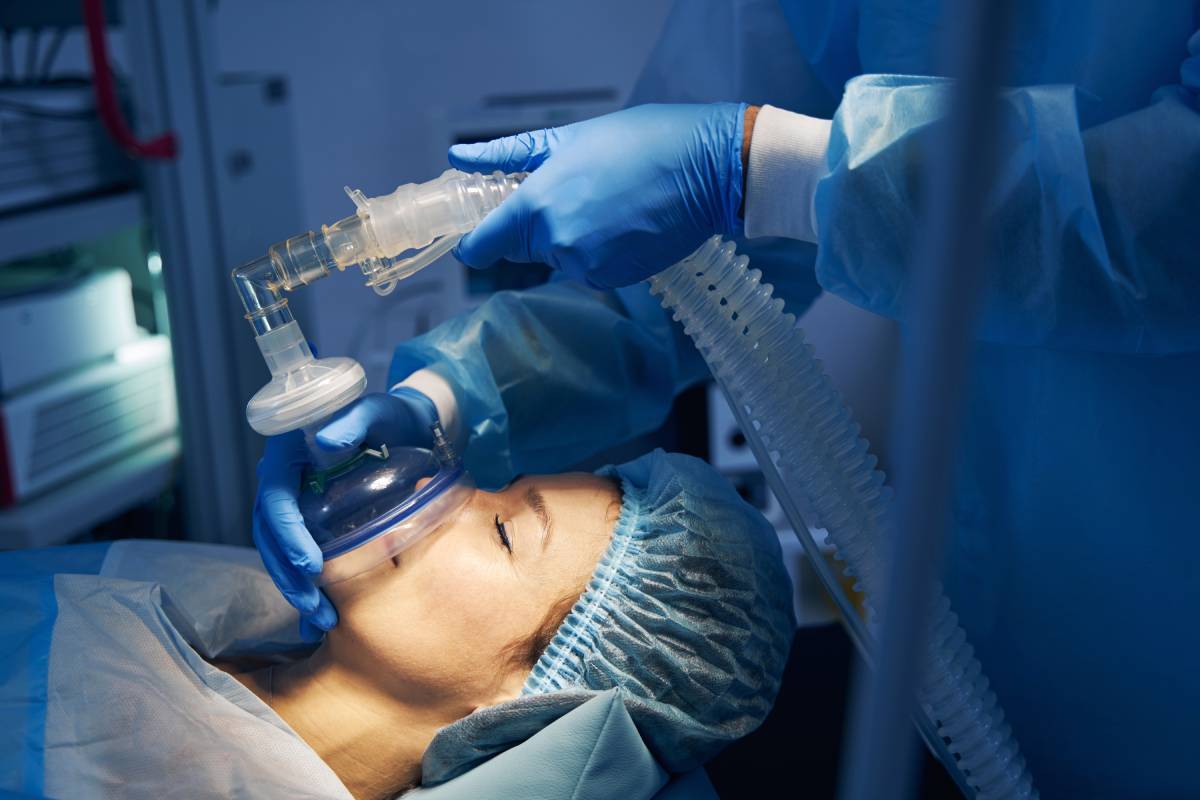Normal Breathing and How Anesthesia Disrupts It

Breathing is a fundamental, often unconscious activity that we do every moment of every day. Our body’s ability to manage this process seamlessly is an amazing feat. Breathing involves a delicate interplay between the lungs, diaphragm, and various muscles that work together to ensure that oxygen enters our bloodstream and carbon dioxide is expelled. But what happens when anesthesia is used during medical procedures, and why do some patients need help breathing during their procedure? Understanding how anesthesia disrupts breathing helps demystify this critical aspect of surgical care.
Under normal conditions, breathing is controlled by a part of the brain called the medulla oblongata, which automatically regulates our respiratory rate based on the body’s needs. During inhalation, the diaphragm muscle contracts and moves downward, creating a vacuum that draws air into the lungs. This process is complemented by the intercostal muscles between your ribs, which assist in expanding and contracting the chest cavity. The oxygen then diffuses into the bloodstream while carbon dioxide, a byproduct of metabolism, is expelled during exhalation.
When anesthesia is administered, the dynamics of breathing change significantly. Anesthesia involves a combination of medications that induce decreased awareness and consciousness in a controlled manner. In particular, general anesthesia induces complete unconsciousness and blocks many physiological processes that are normally reflexive. These medications typically include anesthetic gases or intravenous drugs that can affect the central nervous system, including the areas responsible for breathing control.
One of the primary ways anesthesia disrupts normal breathing is by suppressing the brain’s ability to regulate respiratory function. Anesthetic agents can dampen the signals sent from the brain to the muscles, including those involved in breathing. This suppression means the automatic adjustments made in response to changes in blood carbon dioxide and oxygen levels may be less responsive. As a result, the rate and depth of breathing can become irregular.
Additionally, neuromuscular blockers are sometimes used during surgery to relax the muscles and facilitate intubation or surgical access. These drugs temporarily paralyze the muscles, meaning that breathing must be managed mechanically by ventilators.
Ventilators are machines designed to take over the work of breathing while under anesthesia. They are programmed to deliver a controlled amount of oxygen and remove carbon dioxide from the body. The anesthesiologist or respiratory therapist carefully monitors and adjusts the ventilator settings to ensure that the patient receives an adequate supply of oxygen and that carbon dioxide levels remain balanced.
The controlled environment in an operating room allows medical professionals to manage breathing and maintain adequate oxygenation while anesthesia is in effect. Once the surgical procedure is completed, the anesthetic agents are carefully stopped, and their effects wear off.
As this happens, normal breathing patterns begin to return. The patient’s respiratory function is closely monitored during the recovery phase to ensure that their breathing resumes to its pre-anesthesia state.
It’s important to remember that anesthesia disrupts normal breathing in a temporary and controlled way, and that this aspect of medical care is well understood. Anesthesiologists are trained to monitor and support breathing throughout the procedure to ensure patient safety. The use of ventilators and close monitoring helps mitigate the risks associated with changes in breathing patterns.
In summary, while anesthesia significantly alters the normal process of breathing by affecting brain function and muscle control, it is administered under careful supervision to ensure that patients receive adequate oxygen and carbon dioxide is effectively removed. The skilled management of these changes by medical professionals helps ensure that anesthesia is both safe and effective, allowing for successful surgical outcomes while maintaining patient safety.
